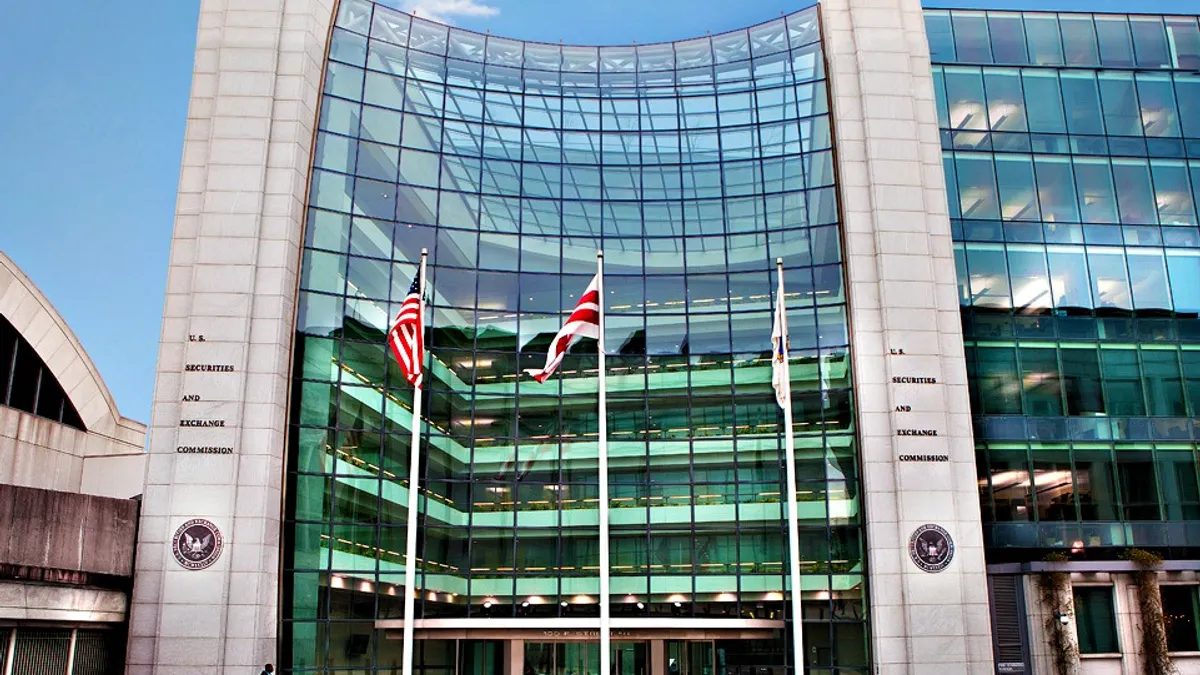The Securities and Exchange Commission appears to be playing catch-up with the boom in special purpose acquisition companies (SPACs) by issuing guidance over the last two weeks cautioning companies on the accounting treatment of warrants and the liability risk of forward-looking disclosures.
“The staff at the Securities and Exchange Commission are continuing to look carefully at filings and disclosures by SPACs and their private targets,” John Coates, the SEC’s acting director of corporate finance, said in an April 8 statement.
The scrutiny of how SPACs are accounting for warrants and whether their forward-looking statements are exposing them to regulatory liability follows a statement by the SEC’s acting chief accountant, Paul Munter, at the end of March urging caution as companies jump on the SPAC bandwagon.
“We encourage stakeholders to consider the risks, complexities, and challenges related to SPAC mergers,” Munter said.
Already more than 550 SPACs have filed to go public this year, twice as many as last year, itself a record year for the IPO alternative. The boom is driven by companies leveraging the SPAC merger process as a quicker and cheaper way to go public than a traditional IPO.
Warrant accounting
The accounting issue centers on whether the warrants, which SPAC sponsors issue to encourage investment in their shell company, are being categorized properly.
Because the company has no means of making money until it identifies and then merges with a promising private company, it uses the warrants as an enticement of gains over and above anything the shares generate.
The warrants are issued in fractions and entitle holders to buy additional shares post-merger. They typically come packaged with the shares as a unit.
SPACs have been around for decades and have typically treated these warrants as equity instruments, but the SEC, now that SPACs are booming, are starting to look closely at the accounting practices connected with them and are seeing potentially problematic patterns.
In an April 12 statement, SEC staff said the warrants, depending on their terms, shouldn’t be treated as equity investments but are more appropriately treated as liabilities.
“The warrants should be classified as a liability measured at fair value, with changes in fair value each period reported in earnings,” the staff statement said. “While the specific terms of such warrants can vary, we understand that certain features of warrants issued in SPAC transactions may be common across many entities.”
SEC staff have begun an outreach to discuss their concerns and reportedly are putting new SPAC approvals on hold until the issue is resolved.
“A pipeline of hundreds of filings for new SPACs could be affected,” Accounting Today reported. “The SEC indicated they will not declare any registration statements effective unless the warrant issue is addressed.”
Existing SPACs could be affected, too; companies that have already completed their merger and are operating publicly could be forced to revise their treatment of the warrants.
“Firms will be expected to review their statements and correct any material errors,” the Accounting Today report said.
Disclosure liability
A key issue in the forward-looking disclosure issue is the safe-harbor provision in the Private Securities Litigation Reform Act (PSLRA), a 1995 law intended to curb frivolous securities lawsuits.
The safe harbor gives some protection to companies discussing performance expectations during a merger. The statements are typically intended to assure investors and analysts the merger makes sense from a growth perspective.
SPACs, which are built around mergers, have been relying on that protection as they make forward-looking statements about their deal. But the SEC isn’t sure the protection applies the way companies might think it does; since SPACs are IPOs, the restriction around forward-looking statements pre-IPO should be seen as remaining in force.
“Any simple claim about reduced liability exposure for SPAC participants is overstated at best, and potentially seriously misleading at worst,” Coates said in his April 8 statement. “Indeed, in some ways, liability risks for those involved are higher, not lower, than in conventional IPOs.”
Coates said the safe harbor in the PSLRA only applies in private litigation, and doesn’t prevent the SEC from taking action to enforce federal securities laws.
“Even if the safe harbor clearly applies, its procedural and substantive provisions do not protect against false or misleading statements made with actual knowledge that the statement was false or misleading,” he said. “A company in possession of multiple sets of projections that are based on reasonable assumptions, reflecting different scenarios of how the company’s future may unfold, would be on shaky ground if it only disclosed favorable projections and omitted disclosure of equally reliable but unfavorable projections, regardless of the liability framework later used by courts to assess the disclosures.”
The safe harbor is also not available, he said, if the statements in question are not forward-looking.
“Statements about current valuation or operations have been viewed as outside the safe harbor by some courts, even if they are derived from or linked to forward-looking projections or statements,” he said.
There are other disclosure concerns as well, including issues outside of the PSLRA.
The flurry of recent cautionary notes about the treatment of SPACs could increase now that the Senate has confirmed Gary Gensler, the former Commodity Futures Trading Commission head, as SEC chair.
Both Gensler and acting chair Allison Herren Lee are cautious about deregulatory efforts to spur more IPOs. That doesn’t necessarily mean the SPAC boom is about to deflate, but it suggests the IPO alternative will be subject to more regulatory scrutiny going forward.




















